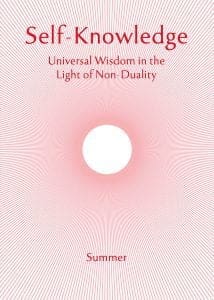The Spiritual Maxims of Père Grou
Père Grou is one of the great spiritual directors of the Roman Catholic tradition. His life was not strikingly eventful, for he lived what he taught: the dedicated interior life pursued in obscurity and self-effacement. It is in his writings that his mind and heart reveal their depth and vitality, particularly the Spiritual Maxims. These…
Read MoreBhagavad Gita Chapter 12: Doing our Best
An important question for seekers of wisdom is whether we should take as the focus of our dedication, the absolute, all-transcending Truth, or a more tangible and conceivable form, such as the source and sustainer of the world, the origin of all power and beauty. The non-dual teachings, and logic, conclude that no finite qualities…
Read MoreFrom Sight to Insight
The purpose of these discourses is to evoke the supramental consciousness in you. You are aware of the mental and rational consciousness, but this is not all. There is yet another consciousness. It is above the mind, and is called the supramental consciousness. It functions in a region far above the mental region, and might…
Read MoreSeeking Perfection Where It is to be Found
There is a river of knowledge That has no banks, no source and no mouth! It is light, pure light, and is hidden in every human heart. Swami Nirbhayananda The teachings on non-duality are concerned with our innate desire for ultimate and lasting fulfilment. They provide a way of practice which leads to peace of…
Read MoreSo how are things?
Throughout our life we are in contact with things, living or inanimate, many of which have qualities that help us to survive, and contribute to our pleasure and comfort. There are also things revealed by science which are too minute to be seen by the naked eye and do not have a form in the…
Read MoreMeditation—Success, Special Powers and Non-Duality
A recent online presentation by the Warden of Shanti Sadan Does non-duality offer potential benefits such as prosperity, success and special powers? According to these teachings, our true substance, our innermost Self, is not separate from the ultimate source of all—the supreme intelligence that underlies and pervades the entire world appearance. The path to inner…
Read MoreThe Inverted Tree
In the fifteenth chapter of the Bhagavad Gita, empirical life is likened to an inverted tree, its roots above and its branches spreading out below. From the context it is clear that the tree is not being used here simply as an example of a living thing, but is meant to represent the way in…
Read MoreMore Light from Meister Eckhart
Meister Eckhart lived from 1260 to 1327 or 1328. He was a Christian spiritual teacher whose insights have much in common with those of the non-dual philosophy. People started writing down and preserving his advice probably when he was in his early 40s around 1300. Eckhart was born near Erfurt, in central Germany. He joined…
Read MoreA Verse by Shri Shankara
With a commentary by Hari Prasad Shastri That Brahman (the Absolute) who, though unborn, yet applying the Yoga of His divine power has taken birth; who has inactivity and motionlessness as his chief characteristics and yet who makes Himself appear endowed with motion and action; who is One-without-a-second, and who, to those labouring under the…
Read MoreShankara’s Response to Buddhist Philosophers
The Buddha came, about 500 BC, to formulate a simple path, the Noble Eightfold Path, to effect that final release from suffering that had also been taught by the seers of the Upanishads. In both traditions such release comes through transcendence—transcendence of the ignorance which binds us to the suffering inherent in bodily existence. The…
Read More


